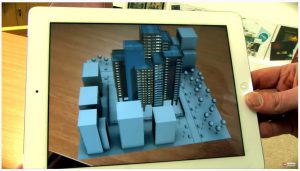In the dynamic landscape of urban development, parking solutions play a pivotal role in optimizing space utilization and enhancing convenience for residents and visitors alike. This article in mechanical car parking in real estate offers a comprehensive overview of various types of mechanical car parking options, highlighting their use, applicability, and key differences compared to regular surface car parking.
Rapid industrialization has contributed immensely to the growth rate of the urban economy and the living standard of individuals all over the world, which resulted in two decades of exponential increase in the number of registered vehicles hitting the streets. The number of cars worldwide is projected to upsurge to 2 Billion by 2040, with the maximum rise expected to be in emerging markets like India and China. (Source: Weforum.org) Urban areas have a higher concentration of vehicles compared to rural areas. (Source: Statista.com) This increasing concentration of cars in the cities has led to a shortage of parking spaces and an instantaneous need to effectively manage the parking systems.
According to worldwide research, 30 per cent of the traffic can be attributed to improper parking services, especially in cities, during peak hours. This problem will only worsen in the coming years if left unaddressed.
What is Mechanical Car Parking?
Mechanical car parking, also known as automated or robotic parking, is an innovative system designed to optimize parking space by utilizing vertical stacking of vehicles. In mechanical car parking systems, cars are parked and retrieved using automated platforms, lifts, or conveyors, eliminating the need for traditional parking spaces where vehicles are parked side by side. This technology allows for the efficient use of limited space in densely populated urban areas, making it particularly suitable for real estate projects where parking space is scarce.
In essence, mechanical car parking systems aim to maximize the number of vehicles parked within a given area while minimizing the footprint of the parking facility. These systems typically involve various components such as car elevators, pallets, and transfer mechanisms controlled by computerized systems to manage the parking and retrieval process efficiently.
Why should Real Estate Projects have Mechanical Parking?
The dearth of space in metro cities has meant that the basement area now serves as the parking facility in most residential projects. However, as the number of cars continues to grow at an uncontrollable pace, the parking facility in a project would need to be operated quickly. The model building bylaws and parking rules of the Ministry of Housing and Urban Affairs suggest 2 Equivalent Car Spaces (ECS) per 100 square meters of floor area in residential premises, that each resident gets one spot for every three bedrooms and two spots for every four bedrooms. Therefore, there is an imminent need to utilize vertical space and develop mechanical car parking in real estate projects to accommodate sufficient parking lots (as per bylaws) in a relatively smaller site area.
Mechanical Parking Management System is the key to enhancing the management of parking lots in large commercial and residential properties. Standalone parking lots in cities could also benefit from an automated car parking system. This article will discuss why is it important to have a mechanical parking management system and how it can help the real estate sector in enhancing the residential lifestyle, while also contributing to the national economy.
Difference between Mechanical parking & surface/podium car parking
The difference between mechanical car parking and surface/podium car parking lies in their design, functionality, and utilization of space:
- Design and Structure:
- Mechanical Car Parking: Utilizes vertical stacking of vehicles using automated platforms, lifts, or conveyors. Cars are parked on multiple levels, one on top of the other, maximizing the use of vertical space.
- Surface/Podium Car Parking: Cars are parked horizontally on the ground level or on elevated platforms, such as podiums or decks. Parking spaces are arranged side by side in rows.
- Space Utilization:
- Mechanical Car Parking: Maximizes parking capacity within a smaller footprint by stacking cars vertically. This allows for efficient use of limited space, making it suitable for densely populated urban areas.
- Surface/Podium Car Parking: Requires more horizontal space for parking, as vehicles are parked side by side. It is commonly found in open-air lots, parking garages, or podium levels of buildings.
- Automation and Technology:
- Mechanical Car Parking: Operates using automated systems controlled by computerized software. Cars are parked and retrieved using mechanical lifts, conveyors, or robotic platforms.
- Surface/Podium Car Parking: Relies on manual parking and retrieval of vehicles by drivers. While some parking facilities may incorporate technology like ticketing systems or surveillance cameras, the process is largely manual.
- Construction and Installation:
- Mechanical Car Parking: Typically involves specialized construction and installation of mechanical components such as car elevators, pallets, and transfer mechanisms. It may require additional infrastructure to support the weight of stacked vehicles.
- Surface/Podium Car Parking: Construction involves building a flat or elevated surface suitable for parking vehicles. This may include constructing ramps, barriers, or support structures for multi-level parking facilities.
- Cost and Maintenance:
- Mechanical Car Parking: Initial investment costs may be higher due to the installation of automated systems and specialized equipment. However, maintenance costs may be lower over time compared to surface parking facilities.
- Surface/Podium Car Parking: Initial construction costs may vary depending on factors such as location, materials, and design complexity. Ongoing maintenance costs may include repairs, cleaning, and security measures.
Types of Mechanical Parking
Different automated car parking types fall under different categories as explained below.
1. Stack parking
Stack parking is a multilevel parking system that stacks one or more vehicles above one another. This allows proper utilization of vertical space in parking spaces that would normally go unused. The single unit of this independent parking system allows space for 3 vehicles, and the double unit has space for 6. The car heights are restricted to 150-170 cm with a platform that has a weight carrying capacity of 2000kgs and stretched up to 270 cm (Single Unit) and 500 cm (Double Unit). Stack parking systems can be further divided into – independent and dependent stack parking systems.
2. Pit parking
The pit parking system should be equipped with a pit for parking. It can be installed indoors and outdoors. However, in the case of indoors, slab height should be taken into account. The hydraulic type and chain type require similar sizes. Various layouts, such as single set, double set, or combination can be arranged to ensure optimum space utilization.
3. Tower parking
The tower parking system comprises a vehicle elevator with a parking space on either side of the shaft, which is repeated over numerous levels to complete the parking tower. The greatest benefit of this system is that it can be constructed as attached to an existing building without causing any vibration to the main structure. The system also has a rotary mechanism that enables to rotate the car 180 degrees to drive directly forward. A tower car park uses a net total space of 210 sq. ft per car area considering all additional spaces of movement / accessing and approach to the car parking.
4. Chess parking
The chess parking system is a Multi-Level Cart Type Parking System that will be installed above ground. This system will be usually built in the RCC framework and can accommodate approximately 225 nos. of cars. The transfer and lifting mechanisms will be of motorized and wire rope type respectively. 2 Entry modules are used for ENTRY and EXIT on the ground floor treated as common entry and exit points.
5. Automatic robotic parking
Robotic parking systems park cars horizontally and vertically with the help of conveyor technology. Automatic car parking systems can be classified into fully automatic and semi-automatic systems. While the semi-automatic parking system provides control over the parking process at the push of a button, fully automatic systems take care of this process independently.
Benefits of Mechanical Parking
Mechanical car parking systems offer a myriad of advantages when integrated into real estate projects, providing innovative solutions to address parking challenges. Here are the key benefits:
- Space Efficiency: Mechanical parking systems maximize the utilization of available space by stacking vehicles vertically. This allows real estate developers to accommodate more parking spots within a smaller footprint, optimizing land usage and increasing the overall property value.
- Compliance with Regulations: With strict regulations governing parking provisions in real estate projects, mechanical car parking systems help developers meet compliance requirements efficiently. By maximizing parking capacity within limited space, these systems ensure adherence to local building codes and zoning regulations.
- Enhanced Convenience: Residents and tenants benefit from the convenience of mechanical parking systems, which provide easy access to parking facilities without the hassle of navigating through congested parking lots or searching for vacant spots. Automated features streamline the parking process, saving time and effort for users.
- Improved Safety and Security: Mechanical parking systems incorporate advanced safety features such as sensors, alarms, and surveillance cameras to ensure the safety and security of parked vehicles. With controlled access and monitoring capabilities, these systems help prevent theft, vandalism, and unauthorized access, enhancing overall security within the property.
- Cost Savings: While the initial investment in mechanical parking systems may be higher compared to traditional parking structures, they offer long-term cost savings. Reduced construction time and lower maintenance requirements contribute to lower operational costs over the lifespan of the project, providing a favorable return on investment for developers.
- Environmental Sustainability: By optimizing space and minimizing land usage, mechanical car parking systems support environmental sustainability initiatives in real estate projects. They help reduce urban sprawl, preserve green spaces, and promote eco-friendly development practices, aligning with sustainability goals and regulations.
- Flexibility in Design: Mechanical parking systems offer flexibility in design and configuration, allowing developers to customize solutions based on project requirements and site constraints. Whether integrated into high-rise buildings, mixed-use developments, or standalone parking facilities, these systems can be tailored to fit specific space limitations and architectural designs.
- Enhanced Property Value: The inclusion of mechanical car parking systems adds value to real estate projects by providing a sought-after amenity for residents and tenants. Properties with efficient parking solutions command higher market value and attract discerning buyers and tenants looking for convenience and accessibility.
In conclusion, mechanical car parking systems offer numerous benefits for real estate projects, including space efficiency, compliance with regulations, enhanced convenience, improved safety and security, cost savings, environmental sustainability, design flexibility, and increased property value. By integrating these innovative parking solutions, developers can create more attractive, functional, and sustainable properties that meet the evolving needs of urban communities.
For more interesting articles like this, click here





